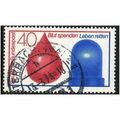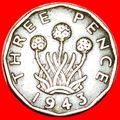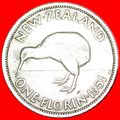Modigliani, Amedeo - Maternity / Maternite 1919 - French art postcard
- Condition : Used
- Dispatch : 2 Days
- Brand : None
- ID# : 74061431
- Quantity : 1 item
- Views : 1217
- Location : United Kingdom

- Seller : justthebook (+1703)
- Barcode : None
- Start : Mon 03 Sep 2012 00:50:48 (BST)
- Close : Run Until Sold
- Remain : Run Until Sold
More Listings from This Seller view all
Seller's Description
- Art Postcard
- Work of art title: Maternite / Maternity
- Artist (if known): Amedeo Modigliani
- Media or other details: painting
- Publisher / Gallery: Musee d'Art Moderne, Villeneuve d'Ascq
- Postally used: no - but has long written message
- Stamp & postmark details (if relevant): no
- Size: modern
- Notes & condition details:
NOTES:
Size: 'Modern' is usually around 6in x 4in / 'Old Standard' is usually around 5 1/2in x 3 1/2in. Larger sizes mentioned, but if you need to know the exact size please ask.
All postcards are not totally new and are pre-owned. It's inevitable that older cards may show signs of ageing and use, particularly sent through the post. Any faults other than normal ageing are noted.
Stock No.: A356
------------------------------------------------
Postage & Packing:
UK (incl. IOM, CI & BFPO): 99p
Europe: GBP 1.60
Rest of world (inc. USA etc): GBP 2.75
No additional charges for more than one postcard. You can buy as many postcards from me as you like and you will just pay the fee above once. (If buying postcards with other things such as books, please contact or wait for invoice before paying).
Payment Methods:
UK - PayPal, Cheque (from UK bank) or postal order
Outside UK: PayPal only please (unless otherwise indicated). NO non-UK currency checks or money orders (sorry).
NOTE: All postcards are sent in brand new stiffened envelopes which I have bought for the task. These are specially made to protect postcards and you may be able to re-use them. In addition there are other costs to sending so the above charge is not just for the stamp!
----------------------------------------------
Text from the free encyclopedia WIKIPEDIA may appear below to give a little background information:
*************
Amedeo Clemente Modigliani (Italian pronunciation: [ame'd?o modi?'?ani]; July 12, 1884 � January 24, 1920) was an Italian painter and sculptor who worked mainly in France. Primarily a figurative artist, he became known for paintings and sculptures in a modern style characterized by mask-like faces and elongation of form. He died in Paris of tubercular meningitis, exacerbated by poverty, overwork and addiction to alcohol and narcotics.
Modigliani was born into a Jewish family in Livorno, Italy. A port city, Livorno had long served as a refuge for those persecuted for their religion, and was home to a large Jewish community. His maternal great-great-grandfather, Solomon Garsin, had immigrated to Livorno in the 18th century as a refugee.[1]
Modigliani's mother (Eug�nie Garsin) who was born and grew up in Marseille, was descended from an intellectual, scholarly family of Sephardic Jews, generations of whom had resided along the Mediterranean coastline. Her ancestors were learned people, fluent in many languages, known authorities on sacred Jewish texts and founders of a school of Talmudic studies. Family legend traced the Garsins' lineage to the 17th-century Dutch philosopher Baruch Spinoza. The family business was believed to be a credit agency with branches in Livorno, Marseille, Tunis, and London. Their financial fortunes ebbed and flowed. At times they enjoyed affluence, at other times they were subject to dire financial crises and reduced circumstances.[2]
Modigliani�s father, Flaminio, hailed from a family of successful businessmen and entrepreneurs. While not as culturally sophisticated as the Garsins, they knew how to invest into and develop thriving business endeavors. Their wealth was derived from mining the metals abundant in the area of Sardinia and Tuscany and extracting and exporting the ores. When the Garsin and Modigliani families announced the engagement of their children, Flaminio was a wealthy young mining engineer. He managed the mine in Sardinia and oversaw the almost 30,000 acres of timberland the family owned. He also was expert in both forestry and farming management.[3] A reversal in fortune occurred to this prosperous family in 1883. An economic downturn in the price of metal plunged the Modiglianis into bankruptcy. Ever resourceful, Modigliani�s mother used her social contacts to establish a school and, along with her two sisters, made the school into a successful enterprise.[4]
Modigliani was the fourth child, whose birth coincided with the disastrous financial collapse of his father's business interests. Amedeo's birth saved the family from ruin; according to an ancient law, creditors could not seize the bed of a pregnant woman or a mother with a newborn child. The bailiffs entered the family's home just as Eugenia went into labour; the family protected their most valuable assets by piling them on top of her.
Modigliani had a close relationship with his mother, who taught him at home until he was 10. Beset with health problems after an attack of pleurisy when he was about 11, a few years later he developed a case of typhoid fever. When he was 16 he was taken ill again and contracted the tuberculosis which would later claim his life. After Modigliani recovered from the second bout of pleurisy, his mother took him on a tour of southern Italy: Naples, Capri, Rome and Amalfi, then north to Florence and Venice.[5][6][7]
His mother was, in many ways, instrumental in his ability to pursue art as a vocation. When he was 11 years of age, she had noted in her diary:
| � |
The child's character is still so unformed that I cannot say what I think of it. He behaves like a spoiled child, but he does not lack intelligence. We shall have to wait and see what is inside this chrysalis. Perhaps an artist? In 1906, Modigliani moved to Paris, then the focal point of the avant-garde. In fact, his arrival at the centre of artistic experimentation coincided with the arrival of two other foreigners who were also to leave their marks upon the art world: Gino Severini and Juan Gris. He settled in Le Bateau-Lavoir, a commune for penniless artists in Montmartre, renting himself a studio in Rue Caulaincourt. Even though this artists' quarter of Montmartre was characterized by generalized poverty, Modigliani himself presented�initially, at least�as one would expect the son of a family trying to maintain the appearances of its lost financial standing to present: his wardrobe was dapper without ostentation, and the studio he rented was appointed in a style appropriate to someone with a finely attuned taste in plush drapery and Renaissance reproductions. He soon made efforts to assume the guise of the bohemian artist, but, even in his brown corduroys, scarlet scarf and large black hat, he continued to appear as if he were slumming it, having fallen upon harder times.[12] When he first arrived in Paris, he wrote home regularly to his mother, he sketched his nudes at the Acad�mie Colarossi, and he drank wine in moderation. He was at that time considered by those who knew him as a bit reserved, verging on the asocial.[12] He is noted to have commented, upon meeting Picasso who, at the time, was wearing his trademark workmen's clothes, that even though the man was a genius, that did not excuse his uncouth appearance.[12] |
type=printed postcards
theme=artists signed
sub-theme=art
number of items=single
period=1945 - present
postage condition=unposted
Listing Information
| Listing Type | Gallery Listing |
| Listing ID# | 74061431 |
| Start Time | Mon 03 Sep 2012 00:50:48 (BST) |
| Close Time | Run Until Sold |
| Starting Bid | Fixed Price (no bidding) |
| Item Condition | Used |
| Bids | 0 |
| Views | 1217 |
| Dispatch Time | 2 Days |
| Quantity | 1 |
| Location | United Kingdom |
| Auto Extend | No |



 for 1 item(s)
for 1 item(s)

















